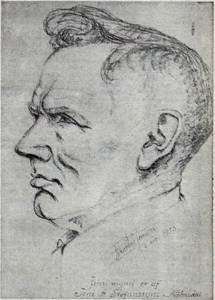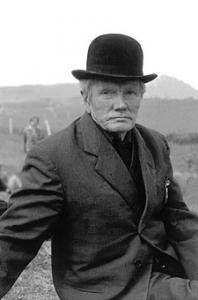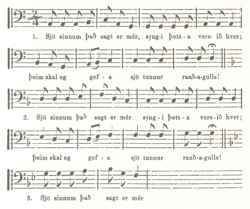| |||
 Jón Stefansson from Modrudalur Icelandic Riddles, Entertainment, Vikivaki and Recitations, is an important publication from the late 1900s compiled by Jon Arnason and Olafur Davidsson. In a section devoted to a pastime called "lotulengdarkapp", the following disscussion is found (p. 193-203): "The term is not accurate but I have not found a more suitable word. Jon Arnason calls some of these recitations "andartaksthulur" which may be more pertinent, for what is performed is not necessarily the point but how much can be performed in one breath, or without inhaling." Later in the chapter the following "doggerel" is discussed:
This is explained as follows:
Another version of the tune is then discussed:
Rev. Bjarni Þorsteinsson discusses Seven times it's said to me in his book Icelandic Folk Songs and states (p. 580) that Olafur Davidsson had mixed up the tunes. The first tune, that Olafur credits to his brother, came from Pall Melsted and the latter one from Gundmundur. This correction been taken into account in this presentation. A brief study of the above mentioned tunes reveals that to perform them seven times, the singer would have to span three octaves plus a semitone.  Jon Stefansson from Modrudalur The Arni Magnusson Institute for Icelandic Studies preserves a recording where Jon Stefansson from Modrudalur in the Mountains (Modrudalur a Fjollum) executes this feat - though the tune is a bit different from the ones discussed above. The recording is from 1964 when Jon was 84 years old: In September 2010, students from the Iceland Academy of the Arts came to visit the Iceland Music History Museum. Amongst museum projects briefly introduced to the students was the Ismus database that, among other things, makes accessible the Folkloric Sound Archive of The Arni Magnusson Institute. The presentation closed with the above performance of Jon Stefansson; which is always well received. Afterwards, one of the students, Einar Sverrir Tryggvason, apparently took up a challenge posed by a friend to re-work or re-mix Jon's performance: This reworked version caught considerable attention - Einar Sverrir was interviewed on the National Radio, the song was discussed in a daily news magazine show on the National TV and Einar Sverrir's web page suddenly became popular. Additionally, 3rd-5th graders in at least one school liked the tune so much that they decided to make a dance performance to accompany it – According to the teacher, pupils composed steps and moves with minimal assistance. Who said that old time folklore did not appeal to young people? ! Einar Sverrir has "arranged" other tunes performed by Jon Stefansson, e.g. Viltu min vera? (Would You Like to be Mine?) and Tontegundirnar (The Keys). In the latter song the lyrics basically goes through the circle of fifths, reciting how many sharps and flats each key has.
|

